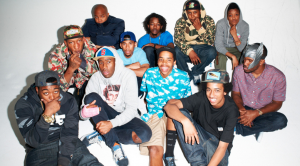The Mystery Behind Shein
April 8, 2021
Shein has been at the forefront of many teenage girls’ minds as the summer approaches and the search for low-price bikinis begins. It has caused controversy over social media with regards to unethical child labor use, environmentalism, and cheapness of the clothes. There is a certain mystery behind the company’s practices that causes consumer distrust and as it may seem, there have been few organizations that have actually delved into what is actually going on.
To begin, Shein was founded in 2008 by CEO Chris Xu, also known as Yangtian Xu. He “was an American-born graduate of Washington University” (Faithfull). Before Shein, Xu owned a successful wedding dress company and gave it all up to begin his ventures with his new online fast fashion shop. The company was originally called “Sheinside”, but was renamed “Shein” in 2015 as efforts grew to infiltrate the global market. They have come to be wildly successful in the US, as it “is not Shein’s largest market” due to the abundance of dirt-cheap trendy dupes they carry (Faithfull).
The reason for the extremely low prices has been speculated to be because of child labor use, which contradicts Shein’s “Social Responsibility” page on their website. In it they claim that they “strictly abide by child labor laws in each of the countries that [they] operate in. Neither [Shein] nor any of our partners are allowed to hire underage children” (Shein). As Shein hinted in the line “each of the countries” customers are reminded child labor laws vary from nation to nation. China’s intensely competitive economy drives the search for inexpensive ways to surpass other businesses. It has actually been stated that child labor is “at the heart of [China’s] export economy” (Burket). Guangdong, a coastal province of China and home to a Shein factory, had a “massive child labor ring [broken up by authorities]” in 2008 (Burket). According to the Bureau of International Labor Affairs, a Guangdong factory is currently using teenagers spanning from ages 13-16 to produce toys. They use methods of coercion such as “financial [penalties], being fined for any mistakes in their work, and other “deceptive promises” (DOL). Others include work-study programs, in which employers can find a loophole in Article 15 of the Labor Law. Doing this allows companies to “recruit minors under the age of 16” under the guise that the work would be for the purpose of tuition money through special crafts, according to the Library of Congress. It is highly plausible to believe Shein would be doing the same and they just have not gotten a proper expository done of them. The Chinese government actually keeps data on the subject of child labor “‘highly secret’”, which further acts to lower the spread awareness and causes companies to outsource labor and become even more willing to take advantage of government leniency (LOC).
The environmentally conscious are rampant in their fight against fast fashion – and for a good reason. Taking another look at Shein’s “Social Responsibility” page, they allegedly care about sustainability when it comes to production. This is so easily proven false. Shein states, “Unlike most fashion brands that produce thousands of pieces of each style which often ends up as waste, we only produce in small quantities of 50-100 which reduces waste” (Shein). Although they may be producing individual pieces in “small quantities”, Shein still adds “700-1,000 new styles daily” to their website according to CMO Molly Miao (Maniece). Just because there is not a large amount of one item, does not mean there will not be a tremendous amount of waste and damage from the thousands upon thousands of fast fashion products they sell and produce per day. Shein uses fabrics like nylon and polyester, which do not decompose and become another addition to textile-filled landfills. The fashion industry “is responsible for 10% of the world’s annual carbon emissions” (Maniece). With fast fashion picking up speed, there needs to be a reevaluation of shortsighted consumer choices before the effects become irreversible.
What makes Shein so alluring is the fact that people can buy a whole new wardrobe for as cheap as about $200. It is ironic thinking about the demographic that makes purchases from Shein. In contradiction to the tremendous amounts of activism and preaching about living sustainably, Generation Z is the target market. The success of Shein and other fast fashion companies can be attributed to lack of research or even just the lack of information due to the secretiveness of these massive brands.










